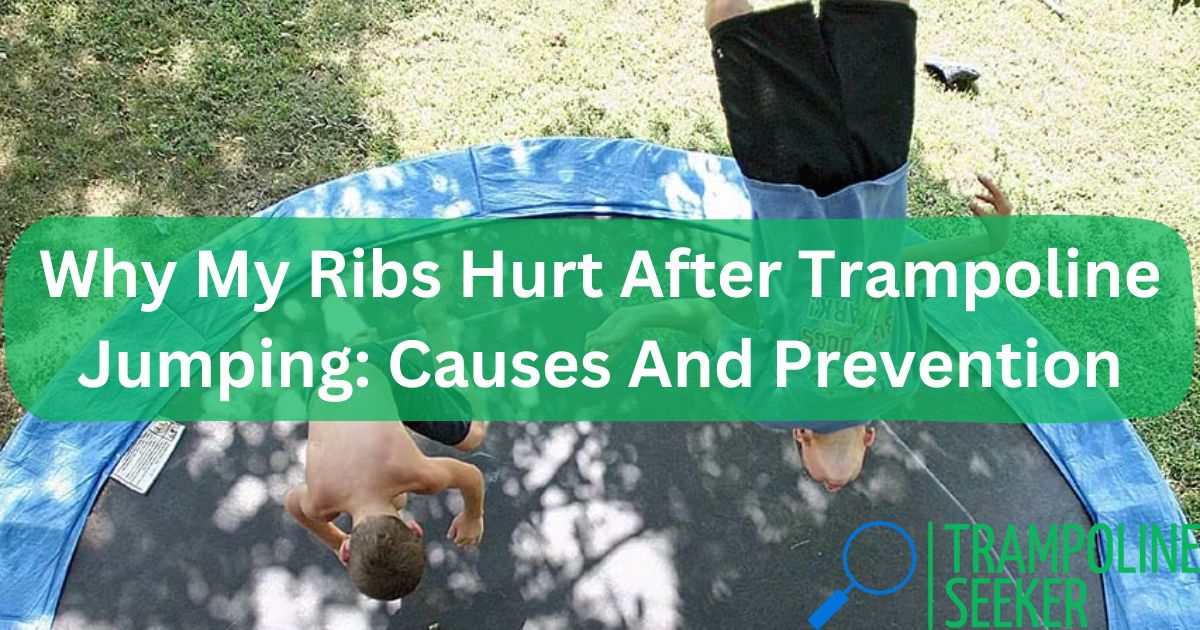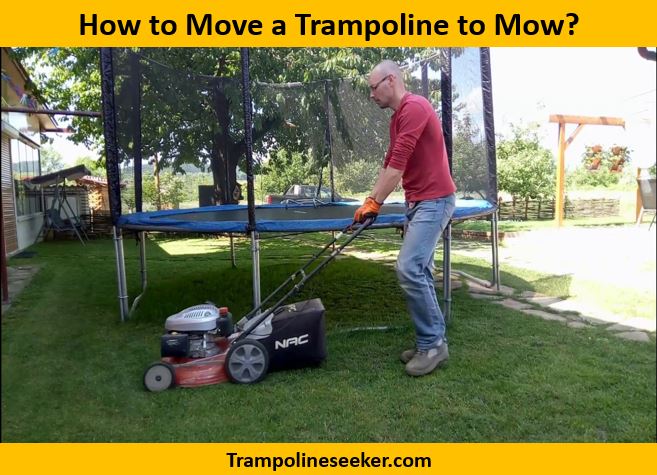Trampoline snakes are common in many parts of the United States, and they’re sometimes mistaken for rattlesnakes, which can be very dangerous if you come in contact with one.
Luckily, trampoline snakes are much less likely to bite than rattlesnakes, and they aren’t poisonous at all, so you should feel safe from harm as long as you know how to identify them.
If you’re interested in learning how to get rid of these snakes safely and effectively, continue reading!
What Attracts Snakes To In Ground Trampolines?
There are a few things that can attract snakes to in ground trampolines. One is if the trampoline is near a food source, such as a bird feeder or small mammal burrow. Snakes are also attracted to places that offer them shelter, such as under rocks or logs. Another possibility is if the trampoline has been left in the sun for long periods, as snakes like to bask in the heat.
How to Get Rid of In Ground Trampoline Snakes?
You should first seal any cracks or gaps around the trampoline and ensure all the openings on the top of your trampoline are closed tightly.
Then, ensure your trampoline has plenty of ventilation by not covering it up with plastic tarps during bad weather.
And finally, make sure you clean up any fallen leaves and debris from around your trampoline, so snakes have nowhere to hide.
Expert’s Recommendations – In Ground Trampoline Snakes
Here’s what experts recommend:
- Check around your trampoline before getting on it. Watch for any sudden movements in tall grass or shrubs or movement in the water underneath the trampoline mat.
- Don’t leave any food scraps behind when you’re done eating at picnics or barbeques near the trampoline.
- Don’t pile up leaves near the base of your trampoline – they could provide a perfect snake hiding spot.
- Keep branches and weeds trimmed around the edge of your yard where snakes can crawl under and find their way into your yard.
- Look under your trampoline after every use (especially before bed) to make sure no snakes are hanging out waiting for an opportunity to enter.
- Seal holes in the perimeter fence line where snakes can slip through undetected.
- If you see a snake in your backyard, don’t try to kill it yourself. You can call animal control, who will come out and do it for you.
- If you think there is so much activity around your trampoline because of its construction materials, try wrapping pieces of chicken wire around it and covering them with netting or screening fabric.
- Install a snake-proof pitfall next to your trampoline if you live in an area where poisonous snakes are prevalent.
- Use aluminum garden edging as a border around the bottom of the trampoline frame to help protect against sneaky serpents.
And finally, take note: many snakes on our properties enjoy shedding their skin outside, which means there may also be some leftover skin nearby. If you find snakeskin close by, dispose of it using tongs to pick it up and put it in a sealed bag. Seal the bag tightly so the smell won’t attract other pests like rats and mice.
What Have I Done to Get Rid of In Ground Trampoline Snakes?
The best way to get rid of snakes on a trampoline is by following a few helpful tips:
First, you should ensure that your trampoline is covered regularly.
You should also check it daily for any holes or tears the snake’s intrusion may have created.
If there are any spots where the ground has been disturbed, try filling them up with dirt before jumping on them again.
A combination of cayenne pepper, ammonia, mothballs, and ammonia can also deter them from returning to your trampoline.
Finally, if these methods don’t work well enough for you, hire an exterminator if necessary.
You will be happy to know that hiring an exterminator is much more affordable than buying a new trampoline. In addition, they are knowledgeable professionals who can offer advice on better care for your lawn to keep snakes away from your property.
Do Snakes Like Trampolines?
There is no easy answer to this question. Some people say that snakes do enjoy bouncing on trampolines, while others believe that they do not. The truth is that it depends on the snake in question. Some snakes are more active and playful than others, so they might enjoy jumping on a trampoline. Other snakes are more subdued and prefer to stay on the ground. So it varies from snake to snake.
How Do I Keep Water Out f My Inground Trampoline?
Using a cover on your inground trampoline is one of the best ways to prevent water from entering. A cover will help keep the water from getting into the trampoline and protect it from the elements. Another way to keep water out of your trampoline is by ensuring that the area around it is well drained. You can create a drainage system or simply ensure no standing water near the trampoline.
What Do You Put Under an Inground Trampoline?
When installing an inground trampoline, you need to ensure that the area underneath is level and firm. You also need to make sure there’s no debris or rocks that could puncture the trampoline mat.
The best thing to put under an inground trampoline is a layer of sand. This will provide a soft, level surface for the trampoline. The best ground cover is sand, but you can also use a tarp or another type of ground cover.
Do I Need a Retaining Wall for Inground Trampoline?
Yes, this is especially true if your trampoline is located in an area with a lot of foot traffic or if it’s located near a slope. A retaining wall will help to keep your trampoline level stable, preventing it from tipping over or becoming displaced. Also, don’t forget the in ground snakes.
Moreover, if you have a large trampoline or one that’s not round or sandy soil, you’ll also need a retaining wall to prevent the trampoline from moving.
How Deep Do You Have to Dig For a Trampoline?
You must dig at least a six-foot hole to set up a trampoline. This is because the trampoline will be able to withstand the weight of people jumping on it. The hole also needs to be wide enough so the trampoline can be placed in it without being too cramped.
If you want to have some more about it, read: How to Dig a Hole for A Trampoline?
How Do You Winterize An Inground Trampoline?
If you have an inground trampoline, you’ll need to take some steps to winterize it. Trampoline surfaces should first be cleaned of debris. Afterward, cover the trampoline with a waterproof tarp. You’ll also want to ensure that the trampoline is securely anchored so it doesn’t blow away in high winds.
Conclusion
Getting rid of in ground trampoline snakes on your property is possible by following a few steps. First, consider using a snake repellent. You can also try removing their food source by removing any rodents or insects on your property.
Last but not least, seal up any cracks or holes in your home that might allow snakes under the inground trampoline. By following these tips, you should be able to get rid of the snakes on your property in no time. Also, keep in mind you should have the best in ground trampoline at first.
Articles You May Like to Read:













